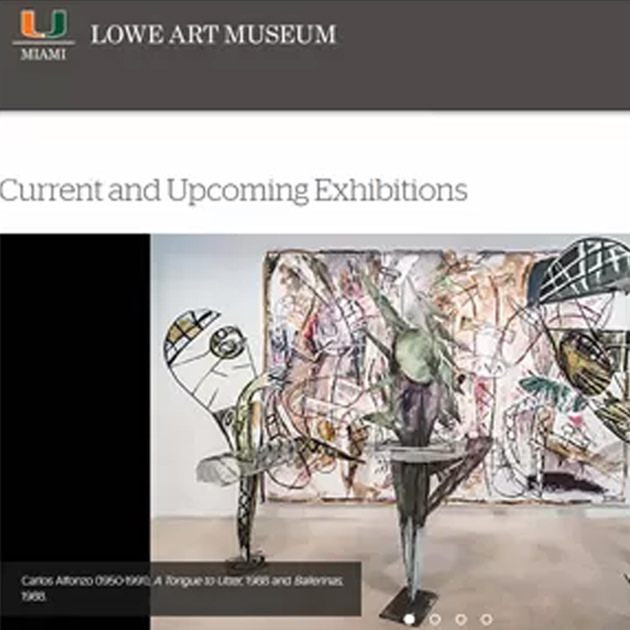
LOWE ART MUSEUM
University of Miami
Carlos Alfonzo, A Tongue to Utter and Ballerinas: Rejoined in Modern Concert
University of Miami
October 2018
A pre-eminent example of Alfonzo’s form system lies in the context of scenography and theatrics in A Tongue to Utter, in concert with Ballerinas, a suite of 3-dimensional sculptures born of and mirroring the painting’s imagery. Following the artist’s intention for the works to be presented together as a theatrical performance in a public space, they were first exhibited in a landmark 1989 show at Lannan Museum. “Ballerinas shouldn’t be closeted in a private garden; their figures should be released to dance audience,” said the artist of his fully-realized mise-en-scène. Across the massive canvas which serves as tonal backdrop, three ballerina figures perform a darkly feverish, energetic dance amidst the disembodied forms characteristic of Alfonzo’s work. In kinetic dialogue with the painted forms, the three dancing sculptures embody a lighter, more joyful reflection; the layered elements further advance the artists messaging through his theatrical use of forms, the brutality of which one must take note. The artist uses piercing instruments to convey martyrdom, violence, and to communicate his political messages: the stabbed tongue is symbolic of the censorship endured by Cuban artists, the dancer’s leg punctured by nails references the oppression of creativity.
In a historical opportunity, these works are today rejoined for the first time in more than 25 years, poised to resume their formidable, dynamic performance on a public scale.